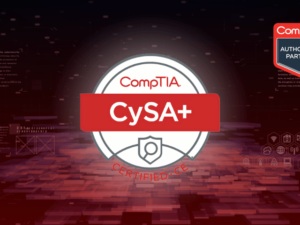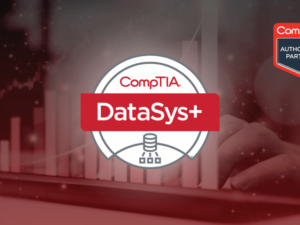DESIGN THINKING FOR INNOVATION AND PROBLEM SOLVING
- Description
- Reviews

DESIGN THINKING FOR INNOVATION AND PROBLEM SOLVING
COURSE DESCRIPTION
The methodology commonly referred to as design thinking is a proven and repeatable problem-solving protocol that any business or profession can employ to achieve better results. It comes from the design and product development realm where it takes many iterations to come up with solutions that users are willing to purchase. Now, it is more widely used in other areas as a methodology for solving problems and challenges more effectively and coming up with new and innovative products.
This workshop will help participants understand the concept of design thinking and learn to apply the steps and the various tools associated with each of the steps to solve the challenges they face in their projects. It will also help them to work closely with their stakeholders, customers, and users to ensure that the solution addresses their challenges, and they are willing to implement and use the solution.
AUDIENCE
Executives and Managers who are tasked to resolve complex challenges or come up with new and innovative products and who would like to learn and experience the design thinking methodology and apply the tools and skills for these purposes.
Upon completion of this program, you will be able to:
• Learn and understand the concepts of Design thinking and its various components
• Apply the methods of Design thinking to create innovative solutions and strategies
• Discover the various tools used in Design thinking and apply them to their own problems or challenges
• Learn to empathize and work with users to better understand the problem or challenge
• Define the problem or challenge statement in specific terms to generate solutions
• Ideate using various tools and techniques to come up with many possibilities to the challenge and problem
• Prototype and test the solution(s) with users and make improvements as needed.
• Test the solution with users to gain valuable feedback and learn more about your users
• Refine, improve, and iterate your possible solutions based on the feedback
Day 1
Time Agenda Activities
Morning
• Introductions and Icebreaker / Activity
• Brief review of Design Thinking
•Empathize
•Define
•Ideate
•Prototype
•Test
• Learning to Emphatize
• Activity: Stakeholder Mapping and Analysis
• Methods that can be used
•Assume a Beginners Mindset
•What How Why?
• Interviewing for Empathy
•How to interview
•Questionstorming
•Prepare for Interview
• Activity: Interviewing Users and Stakeholders (if applicable)
• Icebreaker
• Mini – Lecture
• Discussion and Questions
• Empathizing Activities
• Present Findings
• Key Learnings
Lunch Break
Afternoon
• Activity: Interviewing Users and Stakeholders (if applicable – continued)
• Define the Challenge
• Creating a Point of View (POV)
• Methods that can be used:
•Empathy Map
•Point of View (POV) Clustering
•POV Storytelling, or
•Develop a Persona
• Developing an actionable problem statement t •drive the rest of the design work
• Review & Recap Day 1 – Identify highlights
• Energizer
• Mini – Lecture
• Discussion
• Defining challenge activities
• Present Findings
• Key Learnings
Day 2
Time Agenda Activities
Morning
• Energizer and Review work done on Day 1
• Beginning to Ideate
• Methods that can be used
•Various brainstorming techniques e.g use of Post It
Notes, Mindmap etc.
•Use pattern breaking thinking methods e.g. SCAMPER, Reversing hidden assumptions, etc.
•Brainstorming questions: How Might We…?
• Selection of solutions from the idea pool
• Methods that can be used
•Clustering
•Prioritize using criteria
•Four categories – rational, delight, darling or long shot
•Dot Voting
• Energizer
• Mini – Lecture
• Discussion
• Ideation Activities
• Present Findings
• Key Learnings
Lunch Break
Afternoon
• Prototype and Test
•Build a prototype of the solution
•Present the possible solution to other groups using the prototype and storytelling
•Capture feedback on a feedback capture grid using Post Its for review
• Review & Recap Day 2 – Identify highlights
• Energizer
• Mini – Lecture
• Discussion
• Prototype and testing activities
• Present Findings
• Key Learnings
Day 3
Time Agenda Activities
Morning
• Energizer and Review of work done in Day 1 and 2
• Review Feedback through self-reflection and/or using focus groups.
• Iterate and improve on prototype as needed based on feedback
• Prepare for presentation to stakeholders
• Energizer
• Mini – Lecture
• Discussion
• Prototype and testing activities
• Key Learnings
Lunch Break
Afternoon
• Group Presentation on prototype to stakeholders
• Review & Recap Program – Identify highlights and areas needed for help
• Presentation of Prototype to stakeholders
• Feedback and Q&A
• Judging of prototype
• Key Learnings
• Next Steps
Please contact us for the full course outline, schedules and for booking a private class.
Popular Courses
Archive
Working hours
| Monday | 9:00 am - 6.00 pm |
| Tuesday | 9:00 am - 6.00 pm |
| Wednesday | 9:00 am - 6.00 pm |
| Thursday | 9:00 am - 6.00 pm |
| Friday | 9:00 am - 6.00 pm |
| Saturday | Closed |
| Sunday | Closed |









